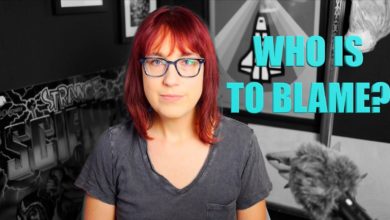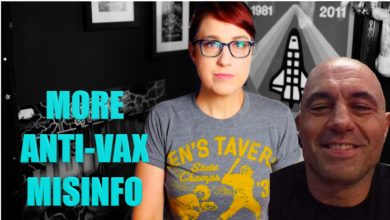Patently Ridiculous
Last November, the United States Patent Office issued patent number 6,960,975 to Boris Volfson of Huntington, Indiana for a spaceship that bends space and time in order to defy gravity. Read through it with the knowledge that someone working for the United States government gave it the old thumbs up.
 This year, there are approximately 500,000 patent applications waiting to be approved. The Patent Office predicts this number will increase to 600,000 by next year. The average examiner spends about 25 hours reviewing each application, though most companies must wait an average of three years to get an approval. With a dwindling staff and an ever-growing backlog of applications, it’s no wonder that pseudoscience like Volfson’s anti-gravity vehicle manage to sneak through, securing a disturbing level of credibility with their official recognition.
This year, there are approximately 500,000 patent applications waiting to be approved. The Patent Office predicts this number will increase to 600,000 by next year. The average examiner spends about 25 hours reviewing each application, though most companies must wait an average of three years to get an approval. With a dwindling staff and an ever-growing backlog of applications, it’s no wonder that pseudoscience like Volfson’s anti-gravity vehicle manage to sneak through, securing a disturbing level of credibility with their official recognition.
The Patent Office recognizes a growing problem and is taking steps to improve the process. Granted, they are more concerned with the issue of vaguely worded and derivative (read: lawsuit-worthy) patents getting through than they are with the approval of inventions that just don’t work. The only two stated requirements to get a patent as of right now are novelty and non-obviousness — scientific validity takes a back seat but presumably could be used as a reason for rejection.
That’s the way it has to be with the present system. A patent, in reality, is a legal tool to protect an original idea, and not an official government endorsement of a product. Sadly, the latter is exactly how the general public sees it, which is why I believe that it would behoove us all to take a dual approach by first educating the public on the limits of what a patent does and then reforming the approval process so that we reject the most absurd and unproven pseudoscience.
One way this might be feasible is through the Peer to Patent Project, a system that would allow a peer review process on applications in order to take a huge load off overworked and possibly undereducated (on the specific issues of each patent) Patent Office. IBM has stepped up to be first in line with its own patents, which bodes well for a larger scale institution. Not only would this process help stop redundant and obvious patent applications at their infancy, but it could be a way to weed out the pseudoscience before it clogs up the system and gains legitimacy.
I’m interested to see where this goes, and if eventually we’d be able to fight to rescind the patents of thousands of frauds who are using the designation to shill their products, from Q-Rays to cold fusion to free energy.
For further reading, check out this article from InformationWeek in February 2006, The U.S. Patent System in Crisis by Eric Chabrow.





There's also no part of a patent application that says "explain how it works" or "can it be built (yet)?". This is why pseudoscience gets through. It's only the intended use/purpose (What does it do?) that matters in judging originality or whether it's non-obvious, which is qualified by "to experts in the field". Simply because physicists would not imagine such a thing is possible anytime soon (for very long), it surely isn't obvious either. Even if they do figure it out, it would have to happen within the short term of the patent before it would matter. Since serious inventors really consider how it would work to decide if is marketable, it's not as much of an issue (for me), because the crackpots have to pay the fees like anyone else. Let it be a tax on ridiculousness.
That is an interesting notion indeed. I'll be following this from here on in- especially in light of the Bush Administration's attempt to destroy the academic peer review system.
BTW: Rebecca, that was a good picture in the most recent issue of the Skeptical Inquirer. Keep up the good work!
If we create something analogous to Maxwell’s equations using a vector field representing Newtonian gravity, we end up with an extra force, gravitomagnetism. Since this is a weak-field approximation to General Relativity, frame-dragging does approximately the same thing. Now whether the moments of inertia of the Cooper pairs in a superconductor can be lined up to produce a measurable force is unproven, this is not “anti-gravity” because it doesn’t involve a directly repulsive force.
The USAF is currently paying Dr. Ning Li, whose work is cited in the patent, to investigate this concept.
“then reforming the approval process so that we reject the most absurd and unproven pseudoscience.”
If the problem is that people see a patent as a mark of credibility, then fix that, but to do this would require the government to rule on issues of what constitutes scientific fact. Do you really want them to do that? Then we would have to have separate legal protections for inventions that are not scientific, by the government’s definition.
“I’m interested to see where this goes, and if eventually we’d be able to fight to rescind the patents of thousands of frauds who are using the designation to shill their products, from Q-Rays to cold fusion to free energy.”
Did you even read any of the cited papers in that “cold fusion” patent? The ones by Arata & Zhang, by Piantelli, by Srinivasan? Did you notice that there were two papers in there documenting anomalies in the isotopic compositions of those cells after they had been run, and that they were published in the peer-reviewed, mainstream journal: Analytical Chemistry?
Did you know that NASA has filed a patent* for this process** that provides a mechanism for the effects associated with “cold fusion” whilst not actually being fusion and thus avoiding the reasons why fusion can’t occur at room temperature? Should a patent filed on behalf of NASA be considered pseudoscience? If so, should the original inventor have been denied his?
Did you know that DARPA has claimed excess heat from their Palladium-deuteride cells? That SPAWAR has detected ionizing radiation? That Mitsubishi Heavy Industries has found nuclear transmutation products?
*http://appft.uspto.gov/netacgi/nph-Parser?Sect1=PTO1&Sect2=HITOFF&d=PG01&p=1&u=/netahtml/PTO/srchnum.html&r=1&f=G&l=50&s1=%2220110255645%22.PGNR.&OS=DN/20110255645&RS=DN/20110255645
**http://patft.uspto.gov/netacgi/nph-Parser?Sect1=PTO1&Sect2=HITOFF&d=PALL&p=1&u=%2Fnetahtml%2FPTO%2Fsrchnum.htm&r=1&f=G&l=50&s1=7,893,414.PN.&OS=PN/7,893,414&RS=PN/7,893,414)